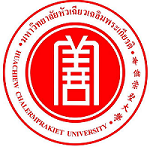Please use this identifier to cite or link to this item:
https://has.hcu.ac.th/jspui/handle/123456789/3712| Title: | Ovicidal Toxicity and Morphological Changes in Housefly Eggs Induced by the Essential Oils of Star Anise and Lemongrass and Their Main Constituents |
| Authors: | Hataichanok Passara Sirawut Sittichok Jirisuda Sinthusiri Tanapoom Moungthipmalai Cheepchanok Puwanard Kouhei Murata Mayura Soonwera หทัยชนก พัศระ ศิรวุฒิ สิทธิโชค จิริสุดา สินธุศิริ ธนภูมิ ม่วงทิพย์มาลัย ชีพชนก ภูวนารถ มยุรา สุนย์วีระ King Mongkut's Institute of Technology Ladkrabang. School of Agricultural Technology King Mongkut's Institute of Technology Ladkrabang. School of Agricultural Technology Huachiew Chalermprakiet University. Faculty of Public and Environmental Health King Mongkut's Institute of Technology Ladkrabang. School of Agricultural Technology Tokai University. School of Agriculture King Mongkut's Institute of Technology Ladkrabang. School of Agricultural Technology |
| Keywords: | Lemongrass ตะไคร้ Essences and essential oils น้ำมันหอมระเหย Housefly Eggs ไข่แมลงวัน Star anise โป๊ยกั้ก Trans-anethole ทรานส์-อะนีโทล Ovicidal toxicity ความเป็นพิษจากการฆ่าไข่ |
| Issue Date: | 2024 |
| Citation: | Insects 2024 Jun 27;15(7):481 |
| Abstract: | This study attempted to evaluate the ovicidal activity of single-component formulations and combination formulations of lemongrass and star anise essential oils (EOs) and their main constituents against housefly eggs. The efficacies of the combinations were compared with those of single-component formulations and α-cypermethrin. Safety bioassays of all treatments and α-cypermethrin on non-target predators-guppy and molly-were conducted. Two combinations: 1% lemongrass EO + 1% trans-anethole and 1% star anise EO + 1% geranial, exhibited a strong ovicidal activity with an inhibition rate of 94.4 to 96.2%. They were 1.1 times as effective as α-cypermethrin. The two combinations also showed high synergistic activity compared to single-component formulations, with a high synergistic index and a high increased inhibition value of 37.4 to 57.7%. All EO treatments were benign for all non-target aquatic species with a high 50% lethal time (LT50) and safety index. In contrast, α-cypermethrin was highly toxic to them with a low LT50. The morphological abnormalities observed in housefly eggs at death were those such as the shrivelling of the eggs, aberrations and damage to the eggshells, hatching lines, aeropyles, plastron, and micropyle. The potential of these two combinations as a cypermethrin replacement is compelling. |
| Description: | สามารถเข้าถึงบทความฉบับเต็ม (Full Text) ได้ที่ : https://pubmed.ncbi.nlm.nih.gov/39057214/ |
| URI: | https://has.hcu.ac.th/jspui/handle/123456789/3712 |
| Appears in Collections: | Public and Environmental Health - Articles Journals |
Files in This Item:
| File | Description | Size | Format | |
|---|---|---|---|---|
| Ovicidal-Toxicity-and-Morphological-Changes-in-Housefly-Eggs .pdf | 75.18 kB | Adobe PDF | View/Open |
Items in DSpace are protected by copyright, with all rights reserved, unless otherwise indicated.
